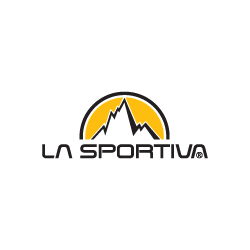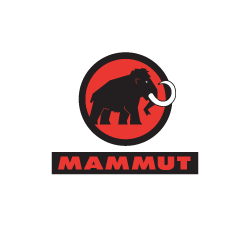Real Climbing: Exum Guides Mark Givens and Gary Falk on Fitz Roy
The following is the conclusion to Mark’s first article.
We woke up on the morning of the 5th rested, psyched, and ready to charge. We’d arranged to have a taxi take us the first 16km up the Rio Electrico to save some time. We cover some 2 hours worth of flat ground efficiently to Piedra del Fraile. It’s a beautiful little meadow with a refugio, horses, and it looks like it’s popular with trekkers. We passed the time chatting and enjoying the weather, which we’d both noticed was changing…rapidly. One minute, sunny. The next, clouds. The forecast for the next few days was for rising pressure so we had no reason but to be optimistic. The next stage was the killer – 5000 vertical feet gained to Paso de Cuadrado. This pass is the northern gateway to Fitzroy. The terrain changed the higher we got, from green pasture, to forest, to sub-alpine, to alpine. It was spectacular. As we were gaining the pass we could see the clouds building and swirling out towards the west, towards the Continental Ice Cap. Huge glaciers stretched out, and it looked very lonely, cold and desolate in that direction. As we were cresting the ridge we could see Aguja Guillaumet poking into the sky, and then, finally, Fitz Roy itself. At the top of the pass was one of the most beautiful views imaginable. Gary and I both remarked about how lucky we were, as climbers, to be able to see this type of thing, and what a shame it was that most people never get the chance. And this was it: to the south, the ridge dropped down 1500 feet to the Fitz Roy glacier. To the left, the sub-peaks of Guillaumet and Mermoz. They just soared out the glacier with incredible precision, sweeping up like a wave of the cleanest granite imaginable, full of dream-like cracks, corners and dihedrals. If only one small chunk of these peaks were accessible in America it would be a huge, amazing climbing area. And here it went on forever. To the west, the Gran Gendarme, Aguja Pollone, and Torre Pier Giorgio. Pollone shoots up like a crazy dagger, straight into the sky, and looks to be a dream or nightmare of a peak depending on who you are. The summit looks like the size of a dinner table and very difficult to reach. To the south, Cerro Standhardt, Torre Egger and the big daddy, Cerro Torre itself.
looked very lonely, cold and desolate in that direction. As we were cresting the ridge we could see Aguja Guillaumet poking into the sky, and then, finally, Fitz Roy itself. At the top of the pass was one of the most beautiful views imaginable. Gary and I both remarked about how lucky we were, as climbers, to be able to see this type of thing, and what a shame it was that most people never get the chance. And this was it: to the south, the ridge dropped down 1500 feet to the Fitz Roy glacier. To the left, the sub-peaks of Guillaumet and Mermoz. They just soared out the glacier with incredible precision, sweeping up like a wave of the cleanest granite imaginable, full of dream-like cracks, corners and dihedrals. If only one small chunk of these peaks were accessible in America it would be a huge, amazing climbing area. And here it went on forever. To the west, the Gran Gendarme, Aguja Pollone, and Torre Pier Giorgio. Pollone shoots up like a crazy dagger, straight into the sky, and looks to be a dream or nightmare of a peak depending on who you are. The summit looks like the size of a dinner table and very difficult to reach. To the south, Cerro Standhardt, Torre Egger and the big daddy, Cerro Torre itself.
I’ve dreamed about these peaks forever, and here they were, totally there and yet totally surreal. And then there was Fitz Roy. We could not get over how massive it was. We knew it was a big peak, but to stand at mid-height to it, several miles away, and have it still tower above us was just staggering to our imaginations. It looks beautiful enough to pull you in, but it also looks deadly. The bottom and mid-sections are a rock-climbers fantasy, but the top is coated in rime ice and looks as if God spit a mouthful of whipped cream on the summit. The weather required to make it look like that meant some serious business. Getting to the top would not be easy, and I finally connected why la clima plays such a huge factor in success or failure in this range.

Down we went to the glacier. In two more hours of jaw-dropping views, high-fives and incredulous smiles we finally turned the corner to the north-west aspect of the mountain and got the first view of our route, Supercanaleta. We expected to find the first 1000 meters full of ice, but were greeted to a different sight. The ice was largely gone, and taking it’s place was a black diorite dike like our the one splitting the east face of our familiar Middle Teton. It looked…hard. Mixed. Committing. But, to be sure, we weren’t sure. Gary, materializing firmly into the group’s optimist (this fact would be essential exactly 24 hours later) erred on the side of positivity, explaining its doability with a logic that made sense. I countered with perhaps a bit more experience on the ice and mixed mediums and repeated that it looked like some slow going. The first 1000 meters was ideally done in three hours, but we couldn’t tell how long it would take. We also puzzled over the upper part of the route, only a little bit of which was visible. As we hemmed and hawed we saw people approaching. After watching them for a bit, I said, “That’s Rolo.” A wave of relief swept over me. Rolo was the expert here, and having him show up was like a little white dove flying into camp. We’d promised Rolo before we left town that we owed him a bottle of wine for his generous beta the day before.
“Ah, guys, instead of that wine you’re going to give me a bottle of poison!” he said as he eyed the route. I watched him carefully, looking for a reaction as he studied the line.
“Did you bring rock shoes?”
Shoot, no we didn’t.
“Well, it should be interesting, yes?” he finally said. We debated our start time with this new info, wondering whether it made sense to start later, closer to daylight hours since the climbing seemed to be more technical than we anticipated. On the other hand, starting well into the dark would put us higher on route, regardless of how technical it was. Hopefully. We split halves and decided on a 3am start time. Alarm set, gear sorted and ready, and a quick dinner. Into the bivy sacks to sleep.
I awoke at 2:48am without the alarm. I wake Gary. We gear up quickly with me racking for the first block. Gary takes the rope. Our packs are so much lighter that before, but we still have everything with us since our strategy is to summit and descend the Franco-Argentine route on the southwest side. Nothing stays in camp. As I put on my pack I am reminded that it’s going to be a very long day. We quickly climb the frozen cone, cross the bergschrund, and are in the couloir. We solo about 40 meters before we hit a step that requires us to take the rope out. It’s totally dark with no moon. We can only see about 10 meters ahead with our headlamps, and the couloir stretches up and away from us. On either side you can feel the walls arc up for thousands of feet. Yikes. 4:08am. Here we go.
My block last for four and a half hours. It’s a mixture of snow, alpine ice, running water and really rotten rock. In the darkness my crampons are sparking on the rock which is cool. The climbing alternates between really easy and fast with short bits of drama. The first is a weird waterfall step about 6 meters high with water running down the backside, the left and right walls one meter wide with delaminated snow on it. I chimney up it trying to avoid getting soaked and then fall out of it, hitting perhaps the only flat spot on the route. Lucky; I don’t tumble out of the couloir. I remind myself that Gary is tied to me and we’re simul-climbing so falling is bad form. I can’t find any pro but one piece for the first hour or so. Gary is keeping up like master and I am again so impressed with his smoothness and skills. The couloir becomes completely devoid of anything but rotten rock and rushing water; I am forced out on the left wall and begin climbing rock. Still, lousy pro. Dawn is breaking. It’s cold out. We’re wearing gloves and as the rock pitches roll by I notice the tips of my gloves are shredding quickly. At about 8am after four hours of climbing I hear a voice and see Rolo giving me a wave. He’s on Ensueno and it looks cold as they rock climb. It’s so quiet here. No stones are falling down the route, there is no wind, and the only sound is us and a tiny gurgling of water. I work my way back into the couloir, which is now starting to hold ice. I notice a tight chimney with an overhanging left wall and recognize this as a key feature. Again, it’s weird and dramatic climbing with lousy gear. I thrutch my way up and look to my left to see the couloir split. Yes! This is the way!
Thirty minutes later and Gary is by my side. We’re psyched at the time we are making and are on schedule, though it is slower than we’d like. I hand Gary the rack and he is off, speed climbing like a pro, just eating up pitch after pitch. I can barely keep up with this man! I’m finding myself resting in relief every time he stops to place some gear, which at this point becomes more consistent. We begin to notice fixed rappel gear up about 2-3 meters on the walls occasionally, and realize just how much this couloir has melted. It looks to be as much as 8 feet in places. Up ahead we can see a major feature of the route, a huge block that splits the couloir and takes us out right. It’s always surprising to me how close a feature like that can look and it’s still so far away. Things are dramatically foreshortened: what looks like a small block is really about 120 meters tall and 30 meters wide….it all adds up. I keep staring at it and it’s not getting closer as quickly as I would like. I can see the top of a possible crux of the route – a pitch of steep water ice – revealing itself as it’s tucked against the right side of what we’re now referring to as simply The Block.
Finally, Gary’s lead is over after two and a half hours. We’ve covered 1000 meters of climbing at this point. It’s 11am. The weather is variable but holding relatively steady and though the going has been slow we’ve climbed everything as fast as possible, not belaying a single pitch. Spirits are high and we can’t be asking any more of each other. We exchange some hugs and a few photos as we prepare for the next stage of the climb. This is where the “real” climbing begins, the point at which we have a topo for. There are 22 pitches, more or less, and what’s a little sobering is that what we’ve done already has had some serious climbing in it due to the route being so out of condition. If that is true, how hard will the “real” climbing be?
I take the rack and launch off. It’s decent mix between alpine and water ice, and it’s steep and technical, with a lot of odd balancy moves to the right or left to connect the ice smears. Lovely, amazing climbing – what we came for. I quickly get us to the base of what we’ve already dubbed the Waterfall Pitch. As I belay Gary up to me I study it. It’s steep and very thin, and the ice is candled and chandeliered. The good news is that the crux part of it is not huge. I have a choice to avoid this and go off to the right, but honestly it looks to me to be faster to tackle the main flow even though the climbing is harder and probably less secure. I traverse out left to the base of it and put one of our three screws in the base of it. It’s horrible ice, about three inches thick and delaminated from the wall by about an inch. The screw rattles uselessly and I pull it out by hand, replacing it twice before I get some purchase. It won’t hold a fall but would at least slow me down. I move up and within one meter I realize just how awful this pitch is. I place a cam way out to the right, move back left onto the flow, and move up again. That piece is also bad. I move up and left again to an ice filled crack, clear it out and put in a red Camalot. The crack is too icy, I know it won’t hold if I fall, but I have no choice. Gary is offering amazing loads of quiet encouragement. I realize that the entire main flow I am on is seriously detached from the rock, and I begin to prepare for having it collapse under me. I look down: Gary is protected as he is off to my right, but if it collapses I will go down with it and all my gear. I will be hurt for sure, at least broken ankles or legs, as the fall is not clean at all and would involve a nasty pendulum. We are very high on the face and I realize I am committed to doing this. Yuck. Three more meters and I am into real ice. I move up, placing my second screw, which is my first solid placement. Yes! I’m moving very slowly, trying to climb as gingerly as possible, and totally frightened. I place my last screw on solid ice, let out a righteous moan of victory, and move onto finally solid and less steep ice. But I am out of screws, and there is no rock gear. I start climbing again, as fast as I can because I am now really run out. I thought that below was the crux, but now here I am with no gear and looking at perhaps a 60 foot fall. I keep moaning and cursing and climb higher and higher, totally freaked by my lack of gear but also remaining totally in control. Normally I would never think twice about a runout like this, but here a fall seems insane as the consequences are dire. I climb past several opportunities for marginal rock gear, convinced the best logic is to stay on the main flow which has now constricted to less than the width of my body. My potential fall is getting longer and longer, and I think just how ridiculous this is at this very moment. Climbing is dumb. Frivolous. I miss my girlfriend. She’s on a beach in Barbados at this exact moment, and thought I was crazy for wanting to climb a mountain instead of spending time with her. I’m overcome with remorse for my actions and where I suddenly am. My children deserve a more responsible Dad. I’m going to jeopardize Gary.
I climb a few more meters, see some fixed gear, and clip in. I immediately get Gary on belay and shout, “Off belay! Climb!!!” I hear Gary’s war whoop and finally let out a sigh of relief. That, I say to myself, was crazy.
Gary smokes the pitch. I’m again just awed at how quickly and smoothly he cruises it – I love this guy! We look at the next pitch, which again looks easier but still awful; thin and weird water ice that is delaminated and just seems tired of hanging around on Fitz Roy. I start up again, surmounting a few steep steps. At the longest one I have a distinct feeling that over the top of this I will see Frank. He fell soloing the California Route years ago and is forever frozen into the mountain, his body partially exposed. I prepare myself, pull over the top, and sure enough, he is there. I try not to stare, muttering, “Bless you, Frank,” a few times, and move past him carefully. There is a belay slightly above him but I avoid it, climbing higher to give myself some distance between us. I am having trouble finding a belay but eventually fire in two cams and call for Gary to come up.
 The next pitch looks wicked, again. I’m starting to get really spent, both physically and emotionally. The climbing is hard, ultra-committing, and scary. I tell myself that it’s not melodramatic to admit that a fall during the last two pitches would have likely been fatal. That’s bumming me out a little. It sucks to be so close to Frank, who I am sure was an awesome, competent and solid alpinist. And here he is. Are we expecting any better? It’s one of those moments when the folly of alpinism hits you in the face, and you start thinking about how selfish this activity is. On the flip-side, this place is rad, I’m totally psyched, and nothing is stopping my partner and I from continuing. We’re working so hard, and our movement together has just been beautiful. I was so psyched to come here with Gary. He’s everything I admire in a partner, solid in every way possible. I’m just loving him at this point and hoping he feels the same.
The next pitch looks wicked, again. I’m starting to get really spent, both physically and emotionally. The climbing is hard, ultra-committing, and scary. I tell myself that it’s not melodramatic to admit that a fall during the last two pitches would have likely been fatal. That’s bumming me out a little. It sucks to be so close to Frank, who I am sure was an awesome, competent and solid alpinist. And here he is. Are we expecting any better? It’s one of those moments when the folly of alpinism hits you in the face, and you start thinking about how selfish this activity is. On the flip-side, this place is rad, I’m totally psyched, and nothing is stopping my partner and I from continuing. We’re working so hard, and our movement together has just been beautiful. I was so psyched to come here with Gary. He’s everything I admire in a partner, solid in every way possible. I’m just loving him at this point and hoping he feels the same.
I take off on what I sense from where we are is the last hard pitch of ice before we begin a long traverse to the right and another stage of the route begins. There are three runnels to choose from, and I take the middle one, hoping it will give me more options even though it is very thin. I climb up to where the ice finally pinches into a crack and runs out, and I swing my tool on a flow that appears to my left. A chunk of ice flies out and hits me square in the right eye. The blow takes me totally by surprise; I don’t even have time to blink in defense. I downclimb and begin to moan. Gary doesn’t realize what’s happened, though I start saying, “My eye. Crap, my eye!” It’s tearing uncontrollably, and I can’t open it. Minutes roll by. Of course, at this moment the sun comes out and even though my eye is closed I can feel the sun and the pain just sears even more. I keep trying to open it but I can’t see. More minutes roll by. I take my pack off, propping it between myself and the wall. It’s not clipped in, if I drop it I am screwed, but I am so angry and frustrated I don’t care. I dig out my sunglasses, take my helmet off, put the glasses, helmet and pack back on. Gary now understands what’s happening and is patiently waiting for me to get on with it. I open my eyes and the right one is blurry and tearing. I can see about half as well out of it. I move left onto a wider flow, and again just can’t believe what I am on. The ice is so crappy, about 85 degrees, less than two inches thick, and again delaminated from the rock by about an inch. I take a 17cm screw, get about three inches of it in, and clip the rope through it. The piece is such a joke but I am so ambivalent about it and everything else that I just keep moving up. Suddenly I stop caring about the consequences. It’s odd but reaching that point of detachment about the situation is helpful and my mind is freed from the gravity of this climbing. The pitch begins to roll over to more moderate ground, I climb as high as I possibly can to move things along, more left onto a rock rib, climb up some more, and make a belay. Gary comes up. I am spent, totally wasted, and tell him. It’s 2:30pm – those last few pitches took three and a half hours. We eat and drink some, and Gary racks up for the next block.
We can see here that the route begins the traverse out to the right, and hopefully the ice pitches end and some more mellow rock climbing begins. We can see the ridgeline several hundred meters above us. The summit is relatively close once we hit that ridgeline – we traverse it for a few pitches, rappel into a col, and then scramble for an hour to the summit. Although we can’t see exactly the way, we are on route. Tired or not, we’re psyched and still charging ahead.
Gary takes off. He fires the last pitch of ice and moves hard right on a rock ramp. The traverse he is doing looks delicate and balancy. After about 40 minutes of this he disappears from view and then shouts to me to climb. I stand, and immediately realize how shaky I am. I follow the rope mindlessly, trying to stay on my feet. The rock traverse is rad – it’s super exposed and fun, and then I move up and right. I take my gloves off for the first time and jam them in a shallow crack, my crampons smearing below me. I reach Gary.
 “Dude, that lead was sick!” I tell him. I’m impressed and ridiculously enthusiastic that he’s now on his block and will take us through the next major section of the route. That I feel like crap and am totally wasted doesn’t matter; following him on the last pitch felt good and relaxed and I know we are still solid. Gary has been studying the topo we have and we begin to piece together the next section of the route. It’s not obvious to me though Gary seems confident. I can see pretty clearly what I think are certain sections that are on route but I am having trouble connecting them in a logical way that gets us to where we think need to be. We also cannot see the next pitch, and it’s a bit of a guess as there are three potential ways to go. As we’re discussing this, the route ahead keeps disappearing in the clouds. They are moving very fast, and although there is no wind, it’s gotten significantly colder. We’re close to the summit in a relative sense, but the climbing looks hard, steep and more technical to my eyes than I was hoping. Watching the weather is a bit disconcerting as well. There is a potential bivy on pitch 18, but we’re somewhere between pitch 10 and 12. It seems suicidal to go for it and hang there for the night if the weather blows up, and it does seem to be deteriorating quickly. Three options materialize: continue up to the summit in a push, shoot for pitch 18 and bivy, or head down. Pushing to the summit seems irresponsible – we can’t see the way clearly and it looks too long and hard at the rate we are going. I figure we’d be summiting well into the darkness. If the weather does anything odd we’re too exposed. Bivying is the same – if the weather changes for the worse we could be looking at being stuck up high with no reliable bail options. We agree, very reluctantly, that going down is wise. It’s 4pm.
“Dude, that lead was sick!” I tell him. I’m impressed and ridiculously enthusiastic that he’s now on his block and will take us through the next major section of the route. That I feel like crap and am totally wasted doesn’t matter; following him on the last pitch felt good and relaxed and I know we are still solid. Gary has been studying the topo we have and we begin to piece together the next section of the route. It’s not obvious to me though Gary seems confident. I can see pretty clearly what I think are certain sections that are on route but I am having trouble connecting them in a logical way that gets us to where we think need to be. We also cannot see the next pitch, and it’s a bit of a guess as there are three potential ways to go. As we’re discussing this, the route ahead keeps disappearing in the clouds. They are moving very fast, and although there is no wind, it’s gotten significantly colder. We’re close to the summit in a relative sense, but the climbing looks hard, steep and more technical to my eyes than I was hoping. Watching the weather is a bit disconcerting as well. There is a potential bivy on pitch 18, but we’re somewhere between pitch 10 and 12. It seems suicidal to go for it and hang there for the night if the weather blows up, and it does seem to be deteriorating quickly. Three options materialize: continue up to the summit in a push, shoot for pitch 18 and bivy, or head down. Pushing to the summit seems irresponsible – we can’t see the way clearly and it looks too long and hard at the rate we are going. I figure we’d be summiting well into the darkness. If the weather does anything odd we’re too exposed. Bivying is the same – if the weather changes for the worse we could be looking at being stuck up high with no reliable bail options. We agree, very reluctantly, that going down is wise. It’s 4pm.
Gary begins to build a rappel anchor as I take out our 75 meters of 6mm tag line. We tie the two lines together and throw them down. I head down first. I can’t believe how many rappels we are heading into, but experience tells me this is going to be an epic journey down. We noticed only inconsistent rap stations built on the way up. Every single one was marginal in one way or another, which meant we are heading into building new stations or rebuilding existing ones. They were placed at odd lengths as well so we could not hope for even rappels every 50 meters or so. And I was feeling just wasted, and for the first time honestly scared about my ability to get down safely. I suddenly felt like a huge liability to Gary, and cursed at myself for having to give so much effort out during my last block.
I get out off the rappel, yell at Gary to come down, and look for a decent anchor. There is a piece of single cord frozen into the ice. I unclip from this and traverse unroped carefully out to my left looking for something else. I see nothing. I realize doing this unroped is bogus – a slip here and I am falling forever – and quickly shimmy my way back across this small ledge to the piece of cord.
What follows seems endless. We build an anchor, leave some gear. A sling here, a nut there, biner there. The rack is getting lighter. We rappel past Frank, past the Block. It’s taking hours. We switch several times between doing single rope raps of less than 30 meters and utilizing the tag line for a longer rap. The tag is getting badly knotted every time we use it. So is the main line. Suddenly the main line has a core shot in the middle of it. How did that happen? We’re cursing both of them. We’re now rappelling down Gary’s block. It’s 10pm – we’ve been doing this for six hours? So little progress! Gary takes charge of the rappels, sensing my fatigue. Every one has the same insane rhythm: Get to a crappy anchor, or discover there is no anchor and we’re at the end of the rope. Gary improves or builds a new one. Backs it up with real gear. I come down. Pull the ropes, praying they don’t get stuck. They come down eventually, but each time rattier and more frozen then before. We toss them down as best we can. They both immediately knot into a frozen mess less than 10 meters down. Gary raps to the knotted mess. Patiently works out a meter. Lowers to the mess. Another meter. More unknotting. Another meter. I’m clipped to the anchor, watching it intently as Gary and the ropes are weighting it. I become transfixed at watching the pins we are using flex in the rock. They look sketchy. The nuts we’re using are lame, I think. Something is going to blow – we can’t do this many marginal raps and get off this thing in one piece. I’m remembering Rolo’s admonishment about how people die here – rappel anchors blowing. It’s the main cause of drama. We’re doing awesome – Gary is, at least, but this is endless. 10 raps. 20 raps. More unknotting. We’re both robbing pins and leaver biners from existing and defunct rap stations that look unsafe.
It’s dark now – the lamps are out. 8 hours of rappelling so far; it’s midnight. We’ve just passed a feature that was key on our way up, but it’s still probably 500 meters from the ground. Finding anchors with the headlamp is stressful. The unknotting of the ropes is getting insane; the pile of frozen cord Gary starts with looks to be impossible to deal with. We’re getting down one meter at a time.
Gary’s led at least thirty rappels. He shines his headlamp in my face as he turns to me. It’s 1am.
“I’m done, dude. Take over.”
I grab all the gear from him. We’re down to three pins. The tag line is wasted and the core shot on the main line is getting bigger. The ropes are so frozen that backing up the rappel with a prussik is impossible. We gave up on that hours ago. Not having a backup seems silly dangerous, but there is no choice. I head down, and discover in the glow of my lamp that what we ascended is now completely melted out only 12 hours later. The route is gone.
My rappels unfold endlessly as well. Gary falls asleep above me, clipped into the anchor. I tried to sleep a few rappels before, but I could feel the anchors flex as Gary was descending and relaxing onto it with my full body was too spooky. Each time I finally unknot my mess of ropes I discover I am within a few meters of the end with no anchors in sight. I pull up the frozen ends and tie a knot in them. Traverse left, traverse right. Scan the terrain with my headlamp to find something to clip into to. Each time, within a meter or two of the end of the rope, I discover some marginal anchor. How lucky is this? It’s like winning the lottery. I come upon what looks like a fresh pin and a newish looking carabiner. A pair of climbers had followed us up the route, several hours behind us. At the Waterfall Pitch I saw one of them but they obviously bailed after that. Good choice, we thought. It was insane to be climbing beneath us on the route, and while rapping I was obsessing about finding evidence that they had used the rappels. But nothing we found had been backed up. How had they made it down? They were both lucky and careless, we agreed; trusting these anchors on their own was loco. But here it was – this fresh pin and biner. I was sure it was evidence of their passage. I clip into it. Weight it. Weight it again. Hard. Harder still. Cool, it’s solid. I’m about to get off rappel and call Gary down when I decide one more try is prudent. I bounce-test it with all my might. Bang! The rock behind it explodes, and the pin shoots out, dangling on my harness. Suddenly I am overcome with fear again. How close was that? I could have killed us both if I depended on that. I traverse to the right wall, drive in a knifeblade. I weight it, blow it, drive it again, blow it. Shoot!!! I finally find a bomber wire and call Gary down.
Another rappel ensues and this time as I lower I realize that the terrain is impossible to get the ropes down. At every few meters I see a place where the rope is going to get stuck. I knew this moment was going to come; in fact, I could not believe we had made what – almost 40 rappels? – and still have both ropes? I knew one was going to get stuck, it was just a question of when. And this was it. How far up were we? If we were till a few hundred meters up it could become a problem. No reason to worry, I tell myself. Just handle it. I find a single pin and ratty sling near the end of my ropes. I back it up with another knifeblade – only one left now. Back that up with a cam behind a detached flake. The whole system sucks. Gary comes down. We pull the ropes. They get stuck. Gary tries valiantly to pull and pull but it’s futile. We pull up what we have left – about 25 meters of 6mm. How much more do we have before we hit the ground? We scan the darkness and see nothing. It’s 2:30am. Going up to get the ropes is impossible – the route is beyond climbable, especially on 25m of 6mm static line. Gary cuts the rope and we head down. I rap about 12 meters down to the end of the rope – an impossibly short distance. I’m in the gully now, which is firm snow. We decide to downclimb, unroped, as far as we can. I head down as Gary dismantles the back up cams and prepares to rap. I downclimb slowly. The pressure is awful and I feel lousy – a fall here is fatal – and I suddenly become consumed with worry for Gary. The angle steepens. I go as far as I dare, about 30 meters, and build an anchor. I’m wasted and freaked. Gary downclimbs as I offer encouragement – yes!, yes, man!
I build another rappel and ask Gary to take over. He descends, finds a detached block. Slings it. I come down. He goes down. Suddenly he shouts that he knows where we are – the first 100 meters of the route. He swears he’s correct. I want to believe it so bad but I can’t see into the darkness to confirm it. If my hopes get dashed and we’re still hours away my brain is going to explode. He’s got to be right, I say. He must be right. I head down the rock rib we’re on and drop into the gully. Gary has already started to downclimb. I think he is right – this terrain is mellow. Didn’t we solo this section in the morning? I pull the rope, noticing it’s totally destroyed as I coil it. I head down carefully, downclimbing with both tools.
We come to a step that drops off – Gary again swears this is where we roped up. It’s got to be. Uncoil the rope. Rap the step – only a few meters. As I am coiling Gary calls out something. What? What? The bergschrund? What are you saying? He is at the bergschrund, he’s actually below it. I climb down towards him, carefully move over the slot, the last sketchy meter. I look at my watch: 4:07am. We roped up at 4:08am – 23 hours and 59 minutes ago. We’re down.
I’m full of energy as we both slowly descend the snow cone. The angle lessens, suddenly we’re on the glacier. We hug each other, full of emotion. We find our bivy site. We locate our water source. Pull out the bags. Sleep.
Two hours later we wake up. The wind is howling. I can tell it’s snowing. The temp has dropped at least 15 degrees. I open up the sack – it’s snowing sideways. Fitz is clouded over; it’s getting blasted. I’m overcome with relief that we made the right choice – I cannot imagine getting down in these conditions up as high as we were. We pack up as sleeping is useless in the screaming wind and waiting any longer means the weather could deteriorate even more. Negotiating back home in a total whiteout would be difficult and time consuming across the edge of the glacier. We start out.
“How are your feet?”
“We’re not speaking to each other anymore.”
We laugh. Despite the aches, the incessant wind, the poor visibility, the cold, we’re happy. Safe. We gave the route our best try. The partnership was amazing – we carried each other like good brothers do in the hills. Every call was made together, and every one was right. To have sent the route clean would have been amazing – a real coup, in fact – but somehow ending like this seems more fitting and dignified for our first trip to Patagonia. Many of our mentors at Exum have spent years trying to get up peaks here. Failure after failure, patiently, they return to finally succeed. We just got to this place, and it’s going to be awhile before Patagonia let’s us earn our keep. We’ve got some more proving to do before she’ll let us in on her secrets. Until then, we’ll keep coming back.











